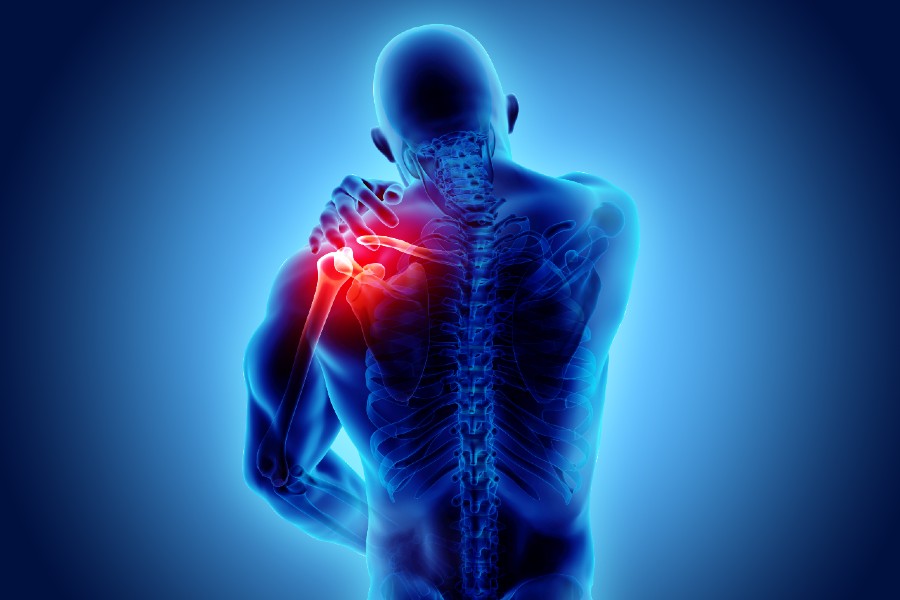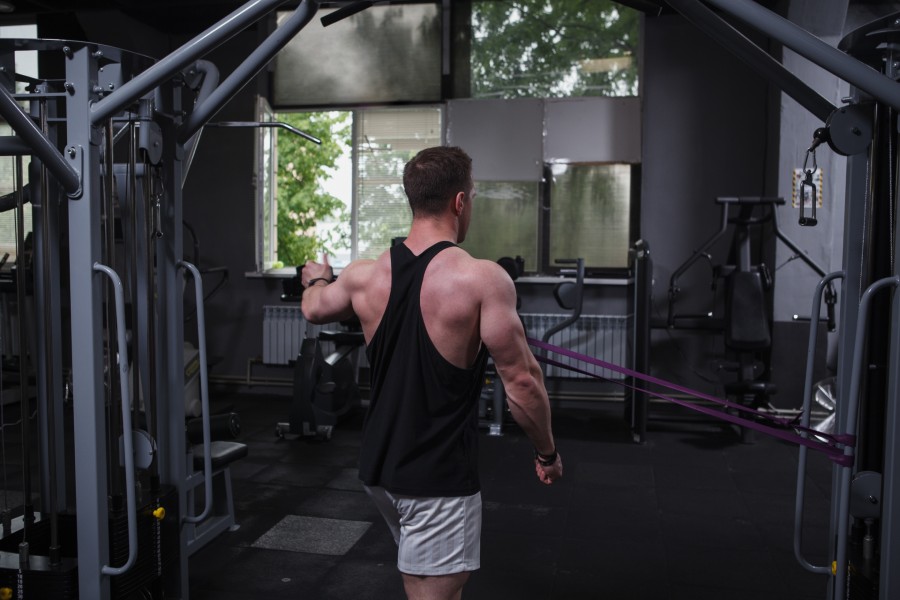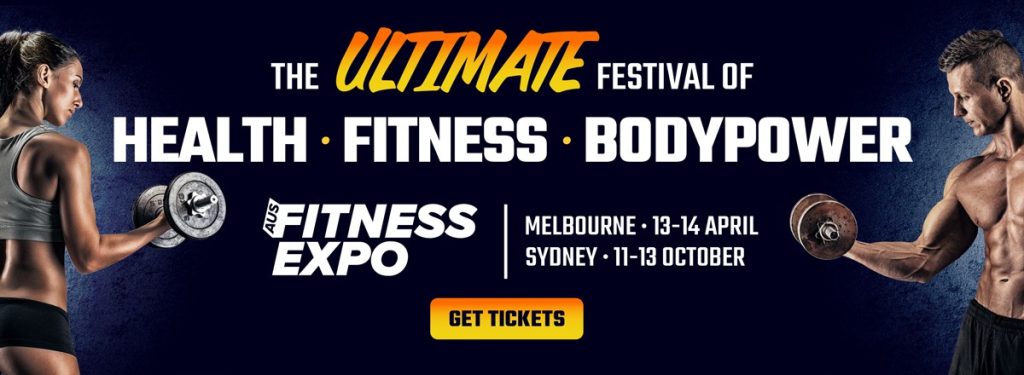Any injury can throw a spanner in the works when it comes to resistance training. Some people will try to ‘push through’ despite an injury, which often only results in further damage or delayed healing. Others may be hesitant to do any activity for fear of exacerbating the problem. Many injuries can be managed in a way that allows for the modification of exercises and therefore no loss of momentum when it comes to a training routine. In fact, certain types of weight training can actually be beneficial in strengthening surrounding muscle groups to support recovery from the injury. In this article, we discuss weight training with a rotator cuff injury. It’s important that if you or your client suspect a rotator cuff injury, they have it assessed and diagnosed by a qualified health professional.
What is the rotator cuff?
The rotator cuff is a group of four muscles that connect the scapular (shoulder blade) to the humerus (upper arm) bone and provide stability to the shoulder joint. The muscles surround the shoulder joint like a cuff (hence the name) and include the following muscles:
- Supraspinatus
- Infraspinatus
- Subscapularis
- Teres minor
These muscles are responsible for stabilising the shoulder joint and therefore any dysfunction in the rotator cuff often results in a muscle imbalance, instability, shoulder pain, and impaired movement. Shoulder pain can last for a prolonged period and the effect on activities of daily living such as dressing, and washing can be immense. (1) A rotator cuff injury can occur in the form of a muscle tear, tendinopathy (tiny tears in the muscle-tendon caused by overuse,) or impingement (where the tendon is pinched between the joint space,) it can be the result of an injury such as a fall or it can occur over time with degeneration. When these muscles or tendons are damaged, it often results in pain, weakness, and a limited range of motion in the shoulder. As is the case with any injury management, initial treatment should involve avoiding any aggravating activities either in the gym or at home, pain management, and continued use of adjacent joints (hand, wrist, and elbow) to prevent any disuse atrophy. (2)
Should you continue weight training with a rotator cuff injury?
Rotator cuff injuries are common among weightlifters and athletes due to overuse and overloading of the shoulder joint especially when in an overhead or externally rotated position. They are also more common in those who perform overhead movements repeatedly as part of their job e.g., electricians and painters. (1)
For fitness professionals, questions often arise such as: Should clients with a rotator cuff injury continue lifting weights? Will weight training cause more damage? As is often the case, the answer is not as simple as yes or no but instead it depends on the severity of the injury as well as the type of exercises being performed.
In general, it is recommended that those with a rotator cuff injury avoid heavy lifting, overhead presses, and any exercises that involve excessive rotation of the shoulder. However, there are certain exercises that can be not only beneficial for strengthening the rotator cuff but also increasing shoulder stability and promoting healing and recovery.
Exercises to avoid with a rotator cuff injury
When a client presents with a rotator cuff injury, it is important to assess the extent of the damage and determine which exercises should be avoided. Here are some exercises that should be eliminated from a program or at least modified:
- Overhead Press: Exercises that involve lifting weights overhead, such as military press and overhead barbell press, should be avoided as they place significant strain on the rotator cuff muscles. In an overhead position, the shoulder is also in a less stable position, making it quite vulnerable.
- Bench Press: Bench press also places the shoulder joint in a vulnerable position and should not be performed, especially if the client has anterior shoulder pain.
- Upright Rows: Upright rows involve lifting a barbell or dumbbell from waist level to chin level. This exercise can cause impingement of the rotator cuff muscles, where the muscle tendons get caught in between the joint space and should therefore be avoided by. Those suffering from a rotator cuff injury.
- Lateral Raises: Lateral raises involve lifting weights to the side of the body, which can also cause impingement and aggravate the rotator cuff muscles and tendons.

What are the best exercises to do for managing a rotator cuff tear?
While it is important to avoid exercises that can further damage the rotator cuff, it is equally important to strengthen the muscles surrounding the shoulder joint to facilitate healing, maintain strength and function and prevent further injury. Here are some exercises that can be beneficial for individuals with a rotator cuff injury:
- Isometric exercises: Isometric exercises involve contracting the muscles without movement. These exercises can be performed with light weights or resistance bands and can be effective for strengthening the rotator cuff without causing further damage.
- Internal and External Rotations: Internal and external rotations are simple exercises that can be done with a resistance band or light weights. These exercises can help improve the strength and stability of the rotator cuff muscles. Be careful to avoid end range external rotation as this position can place extra strain on the rotator cuff.
- Scapular Retraction Exercises: Scapular retraction exercises involve squeezing the shoulder blades together, which can help improve the posture and stability of the shoulder joint. This stability is imperative for when strength training of the shoulder is recommenced, and a client returns to movements such as overhead press.
- Wall Push-ups: Wall push-ups are a simple exercise that can help strengthen the muscles surrounding the shoulder joint, increasing stability without causing further damage. The angle of the body and therefore difficulty of movement can be adapted as needed. This is also a great exercise for activating core muscles.

The length of recovery time from a rotator cuff injury will vary, again depending on the severity of the damage. However, if both the athlete/client and trainer/coach are patient, being sure to rest from any aggravating movements and methodically work through rehabilitation, the injured person should see a gradual return to full function.
In conclusion, individuals with a rotator cuff injury should exercise caution when lifting weights but not avoid it altogether. Heavy lifting, overhead presses, and exercises that involve excessive rotation of the shoulder should be avoided. However, isometric exercises, internal and external rotations, scapular retraction exercises, and wall push-ups can be effective for strengthening the rotator cuff muscles and promoting healing.
As a fitness professional, it is important to assess the extent of the injury and design an exercise program that is tailored to the individual’s needs. With any injury, if pain persists or increases during or after training, any aggravating exercises should be removed from the program and the client should seek advice from a medical professional or physiotherapist. By following these guidelines, clients with a rotator cuff injury can continue to train (albeit in a modified manner) and continue to work towards their fitness goals without exacerbating their injury.
References:
- The American Academy of Orthopaedic Surgeons
https://orthoinfo.aaos.org/en/diseases–conditions/rotator-cuff-tears/ - Australian Physiotherapy Association
https://choose.physio/your-body/shoulder/rotator-cuff-tear
Thanks to Caroline Jones for this article.
About the Author:
Caroline is a physiotherapist who is passionate about using exercise as medicine and getting patients moving, especially those living with chronic conditions.
She is currently undertaking postgraduate research, studying the effects of exercise on women following treatment for gynaecological cancer and consequent lymphoedema. She also holds a Level 3 Certificate in Personal Training, owns a CrossFit box with her husband, and enjoys being a below-average runner.

The Aussie Underwear Brand Nailing the Brief for Profit and Sustainability
A pair of Step One underwear is being sold every 8 seconds around the world, including Australia, America and the UK. From humble beginnings as a bedroom start-up to a now multi-million dollar, publicly listed company, Step One is kicking some serious business goals, all the while managing to maintain meticulous ethical and sustainable practices.

2024 Mother’s Day Classic Supporting Ovarian Cancer Too
Mother’s Day is fast approaching and while some families have a tradition of breakfast in bed or a favourite restaurant for dinner, some Aussies have been making the Mother’s Day Classic fun run a part of theirs. Founded in 1998, this charity event has raised more than $44 million for research into breast cancer over

Let’s Get Physical With Retrosweat Sydney!
Retrosweat, the fun, authentic, 1980s freestyle aerobics classes first started gaining a following in Sydney more than a decade ago and expanded to two locations, offering classes each week. Retrosweat also offer an online library of “at-home” workouts to meet the growing demand for exercise that is both fun and entertaining. What is Retrosweat? Lycra,

Be Mindful in May and Pause for a Cause
What if you could find more focus, clarity, and effectiveness in daily life by learning a 10-minute mindfulness technique and at the same time have a positive impact on the world? Join the Mindful in May movement next month and you can make it happen. What is Mindful in May? Mindful in May is a

Do Protein Supplements Cause Weight Gain?
One of the most common misconceptions in nutrition is that protein supplements contribute to weight gain. We asked Mark Robinson, dietitian and expert for BSc supplements to offer up some advice on the topic and so we can answer the question – do protein supplements cause weight gain? The facts around protein and weight gain

Female Athletes Endorse Athena Sports Nutrition for Women
A new sports nutrition range has just hit our shelves that has been designed specifically to meet the needs of athletic females. Vitaco Health, known for leading sports nutrition brand Musashi, have launched ATHENA Sports Nutrition for women, with several well known Aussie athletes on board as ambassadors to the brand. What is ATHENA Sports

